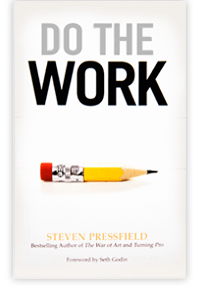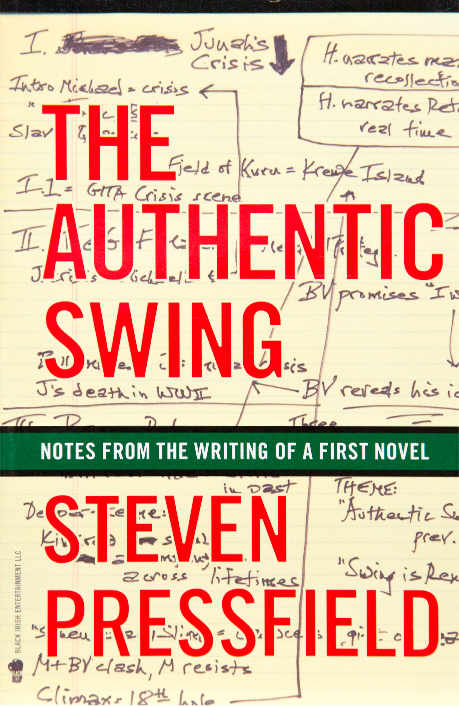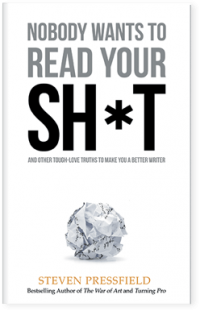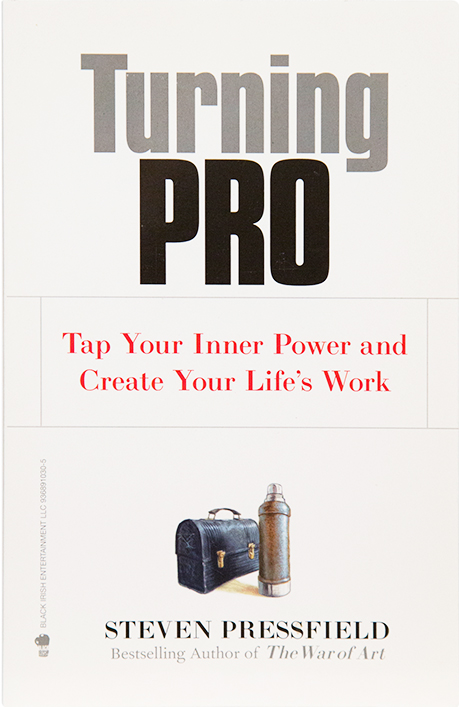Creating New Stars

“To an engineer, fan belts exist between the crankshaft and the water pump. To a physicist, fan belts exist, briefly, in the intervals between stars.”
—George Dyson
That’s beautiful, I thought, after reading the quote above. But . . . What’s it really mean?
Some background:
This quote appears at the end of the following story, in the acknowledgements section of George Dyson’s book Turing’s Cathedral: The Origins of the Digital Universe:
In 1956, at the age of three, I was walking home with my father, physicist Freeman Dyson, from his office at the Institute for Advanced Study in Princeton, New Jersey, when I found a broken fan belt lying in the road. I asked my father what it was. “It’s a piece of the sun,” he replied.
My father was a field theorist, and protégé of Hans Bethe, former wartime leader of the Theoretical Division at Los Alamos, who, when accepting his Nobel Prize for discovering the carbon cycle that fuels the stars, explained that “stars have a life cycle much like animals. They get born, they grow, they go through a definite internal development, and finally they die, to give back the material of which they are made so that new stars may live.” To an engineer, fan belts exist between the crankshaft and the water pump. To a physicist, fan belts exist, briefly, in the intervals between stars.
The sun is the star upon which so much of this world relies, which explains why Dyson’s father called the fan belt “a piece of the sun.” The fan belt exists between the life of —and arguably because of— the sun.
What Bethe also explained in his speech is that,
“The ejected material probably contains the heavy elements which have been formed in the interior of the massive star. Thus heavy elements get into the interstellar gas, and can then be collected again by newly forming stars. It is believed that this is the way how stars get their heavy elements. This means that most of the stars we see, including our sun, are at least second generation stars, which have collected the debris of earlier stars which have suffered a supernova explosion.”
Why am I sharing this on a site that most-often discusses publishing, doing the work, being creative?
Jon Udell’s article “Names That Mean Things, Names That Do Things,” pointed me toward Dyson’s book, but his article 3D Printing Isn’t the Digital Literacy that Libraries Need to Teach was the one that spun me into researching Bethe’s work, as well as the work of William A. Fowler, and how the core materials of stars are gathered by new stars.
What does 3D printing and digital literacy have to do with the creation of stars?
One has the potential to feed the other.
Take the concept of a star and break it down to an individual level. You’re a star. The core of what you create in your lifetime has the potential to help other stars form.
I spend much of my time researching, brainstorming and/or implementing the creation, conservation and sharing of stories and other forms of information (a.k.a. the “heavy elements” or “materials), which are, or have been, at the core of so many individual stars.
What scares me is that much of the material from older stars has been boxed and stored in a relative’s attic, warehoused and forgotten (or in a long que awaiting digitization) in a library’s warehouse, or is disintegrating in full view, with little action to preserve it.
Udell wrote:
“At a gathering of makers and hackers last year I sat in a session on the future of libraries. The entire discussion revolved around 3D printers and maker spaces. I asked about other creative literacies: media, webmaking, curation, research. Nobody was interested. It was all about 3D printing.”
Udell goes on to discuss the maker movement and 3D printers and his conclusion that they are “being marketed with great success.”
Says Udell:
We are starting to realize that you can’t build a house, or heat it, or feed the family that lives in it, by manipulating bits. You need to lay hands on atoms. As we re-engage with the physical world we will help heal our economies and our cultures. That’s all good. But it’s not the first thing that comes to mind when libraries seek to transform themselves from centers of consumption into centers of production.
Libraries really are about bits. They are uniquely positioned to adopt and promote digital literacies. Why don’t they? Those literacies aren’t yet being marketed as effectively as 3D printing. We who care need to figure out how to fix that.
My conclusion on why there’s a push for 3D printers instead of curation/preservation by libraries?
Money and manpower.
Invest in a 3D printer and you’re likely to get people in the library making/using it. Spend the same money on curation/preservation and you’ll cover not even a dime in the dollar of materials that previous stars have created.
“When people say everything’s online, they’re woefully uninformed,” said Jerry Dupont, of the Law Library Microform Consortium, as quoted in the well-titled ABA Journal article “Fading Past: Are Digitization and Budget Cuts Compromising History?”
Why should you care?
So much of what is created today is inspired by materials created by yesterday’s stars.
So much of the problems we face have solutions in past experiences.
So much of where we’d like to go, has been traveled by those in the past.
While making and creating and doing is important, the second and third steps of sharing and preserving are equally important.
Like Udell, I’d like to see a solution and am muddling through my own ideas/solutions.
If you’ve ever incorporated—or have been inspired by (or learned from)—past stars, how would you keep their core materials available for the future? What would be of greatest importance to you?
One last thought from a completely different source:
When interviewed by Jimmy Fallon this past week, Bruce Springsteen said (check out the 2:40 mark):
“It’s not the time in your life, it’s the life in your time.”
There have been some big stars with one-hit lives and small stars packed to the gills with life.
Preserving their materials isn’t just a good thing to do — it has the potential to help grow stars for the future.
One thing you can do? Support the libraries and encourage digital literacy. I know they don’t buy as many books as authors and publishers would always like, but they do have the potential to provide those authors and those publishers the resources, inspiration and stars for the future.




Dear Callie,
Very interesting post. My mind was immediately sent in numerous directions, but the first place it landed was on leadership. Effective leaders are like monster stars having a supernova–the provide direction, motivation, and purpose to newly minted stars on their own journeys. Frankly, this site with you, Steve, and Shawn are mega stars in a long-term supernova. We extract building material–ideas, inspiration, and purpose from the authentic blog posts.
While preserving libraries didn’t really touch on one of my personal passions, it did make me think about writing my wife’s grandmother, seeing the older generations in a different light, respecting the salty old NCO that has spent his life Soldiering–it is actually a scriptural attitude as well, “What has been will be again, what has been done will be done again; there is nothing new under the sun”. Ecclesiastes 1:9 (I had to Google it).
I think your post can also be used to fuel our own efforts. It is irresponsible to the world to keep our own material locked away, unexplored, and unfinished. While it may never have the ‘supernova’ explosion of a best seller–it can still be the material that feeds another baby star. An idea, an expression, a perspective that each of us has may be the final tumbler to fall in some young geniuses’ mind–and that great star could possibly change the world.
Lastly, I felt this sense of humility wash over me as my mind absorbed your writing, and explored its own understanding. We’re made up of others, are influenced by others, and our relationships to others are truly significant. Descartes missed the point by saying an individual was the essential truth–it misses the component parts–the previous stars–that comprise the building materials.
My morning solitude is my ‘combat power’ building time. It is when I exercise my body, my mind, and my spirit. Since I do not subscribe to any dogmatic approach to nurturing the spirit, I have found that this site scratches that itch for me. I try to do a number of things each morning–meditate, pray, read something powerful–and I’ve missed some of those activities while on this site. I realized this morning that it is the same thing. I’m finding my own building material–and maybe putting some of my own into the cosmic soup. Good post. You’ve given me a new chapter or at least topic in my leadership program.
bsn
Brian,
Thank you for your comment.
Huge sections of Bethe’s Nobel Laureate speech had me swimming in confusion, but they also inspired me to dig more so that I understood the what/why of what he was saying. That led me to Fowler and reading his work – and fed my fascination with stars, how they grow and what they give back when they die. My first thought was that there are so many parallels between the creative and the natural worlds, but… The natural world is the creative world. Not two worlds, but one. The stars within those universes DO have the potential to continue to give – and help others grow – even after they die. Blows my mind thinking about it as I type this now…
On libraries . . . They are run by people who have a specific skill set that can be applied to not just preserving, but cataloging documents. In this digital age, that’s a huge thing. So often I’ve searched for documents/images online, but haven’t found them until I’ve stumbled upon a search phrase that’s closest to how the documents were titled online. There isn’t any meta data attached, the interiors aren’t searchable…. So much out there, but it isn’t being cataloged/tagged in a way that others can access it. While the rest of us can help with the preservation, by sharing what we’ve found perhaps within our own family’s history, the libraries could be the place where those files are cataloged and made available for sharing on a larger scale. It makes sense. They could also be the center of communities, helping to capture the stories of that “salty old NCO” or your grandmother or so many others.
Lots to think about…
Thanks, again, Brian.
Callie
You make some great points here, Callie. As we fit ourselves for 21st century living, our insistence upon instant gratification, uber consumption and relentless cravings for the next best thing make the past seem more and more irrelevant. We mistakenly think we are involved in a mandatory exercise to stay current. Yet, as you point out, this couldn’t be further from the truth. In essence, if we harnessed new technology and all of the accompanying disruptive effects with just a little more thoughtfulness, the historical lessons and methods learned in the past would not be ditched, but embraced as a roadmap for better living, and, as you say, creating more stars. There’s no patent for genius that can be implemented and mass produced. Only taking those brave steps into the realm of our own individual creativity will produce anything that is worthwhile and lasting. Even if we simply went to our local libraries for an occasional lecture, or book-signing to get ideas and inspiration, we would validate the need for its existence as a core institution worth preserving. Sometimes I think we need to remind ourselves what it means to be human and acknowledge that no matter how far technology goes, we will always need human interaction and that human touch can never be replaced.
Pheralyn,
I like this very much:
“Sometimes I think we need to remind ourselves what it means to be human and acknowledge that no matter how far technology goes, we will always need human interaction and that human touch can never be replaced.”
When we can’t have that human touch, though . . . Having access to the stories of those before us is important. It is a reminder of where we’ve come from – and an inspiration for what’s to come, whether we are politicians or artists or athletes or soldiers or . . . One small story has sent me spinning so many times in the past. When the sources die, it would be amazing to bring their past into the new/growing. Technology and humans can come together to implement and share.
Thanks again, Pheralyn.
Callie
Thanks Callie, I really loved this. Haha, it was heady for a Friday morning! But it’s given me a lot to think about.
“While making and creating and doing is important, the second and third steps of sharing and preserving are equally important.”
THIS. I think as makers, we get so frustrated (and maybe somewhat rightfully so) at the people who refuse to create and instead stand on the sidelines and holler out directions for us that we forget about the shoulders on which we stand. But in an era where so MUCH content is being produced every day, this is a beautiful reminder that part of our job as artists is to make a habit of capturing the stardust when we happen upon it, whether its our gem or someone else’s.
Thank you for reminding me!
Brandy, I loved your response, especially the phrase “…capturing the stardust…” very well said!
Brandy,
I’m going to echo Pheralyn’s comment about:
“But in an era where so MUCH content is being produced every day, this is a beautiful reminder that part of our job as artists is to make a habit of capturing the stardust when we happen upon it, whether its our gem or someone else’s.”
VERY well said. When I’ve read interviews with different artists, they’re often asked: “Who influenced you?” And I’ve never read the reply, “No one.” There’s always someone or something.
Callie
Great article Callie and a high-five for advocating support of local libraries. My son works for the St. Louis public library system and is in the final semester of a master’s program in library science. His particular area of interest is digitizing and preserving collections so that they remain available and accessible in the future. I am both proud of this as a mom and reassured as an artist. We can’t, as Brandy said, “forget about the shoulders on which we stand.” Nor can we forget that we will one day be the shoulders on which others stand.
Mary,
Give your son a thank you, please. It’s a GOOD thing!
Callie
“Rain doesn’t fall for the flowers, rain just falls.”
Stars don’t burn to build fan belts, they just burn.
In a trunk are folded my mother’s wedding dress, my father’s uniform.
My daughters never met them, Viet Nam as distant as the Civil War, a place my girls might visit in 20 years for the beaches.
When I die, and the trunk goes to Goodwill, love letters from the 1800s are burned, clothes separated, picked over, dispersed, context lost, no longer meaningful, I am that glue. To become something else for somebody else, maybe a boy 30 years from now tries on my fathers Navy jacket, dreams of revolution from the machines, writes his own story of how that jacket changed the world.
What was lost in Dresden, Hiroshima, what does time itself consume every day?
Not lost, just reformed, the sun a son of a sun, lie then as a fan belt on a busy street and half century later prompt a musing transmitted at light speed to friends with whom Callie has shared not one roomful of air.
Even Callie’s lovely post, lament for what might soon be gone, carries information from the past, an echo, not just in content but form.
Information doesn’t die. It is rediscovered, often when needed.
Erik,
You always get my mind spinning…
Yesterday I received a copy of “Walter Koessler 1914-1918: The personal photo journal of a German officer in World War I.”
It is a book of WWI images and letters, put together by the photographer’s great-grandson, Dean Putney. Putney’s mother shared the original photo album with him, he understood the importance, and initiated a Kickstarter campaign to support the digitization of the images and then a printing of them as a book http://wwiphotos.tumblr.com/
Last night my 10 yr old son and I went through ever page – he just as fascinated as me. As a side, Putney’s great-grandfather left Germany before WWII, headed to Tinseltown and was a designer, for ALL’S QUIET ON THE WESTERN FRONT. According to Putney, there’s little doubt about his great-grandfather pulling inspiration from those photos for the creation of the film. Putney saw the resemblances himself while watching.
Putney’s family could have let that die with them, but… They shared the images – and the personal letters instead.
HOPE you’ll do the same. Digitize those letters of yours. Keep the uniform or donate.
One more story and I’ll stop rambling:
Years ago I became friends with students at MIT who lived next door to me in Boston. Turns out they were in the same fraternity as my grandfather decades before, during the Prohibition era. They pulled out the old minutes from meetings and there we found my grandfather, who died when I was 8. I learned so much about him as a young man through just simple minutes from a meeting. I also learned what was going on during that time as one of the entries was about whether or not they should try to get alcohol for a holiday party – again, during Prohibition… Gave me – and my friends – a look at not just my grandfather, but the world in which he lived, too. Priceless.
I’ve rambled long enough. Keep that history alive.
Callie
Lovely post, Callie.
I see a wide angle response:
– the information / artifacts that exist but cannot be accessed except by a ‘curated’ few (which sometimes includes those who have the money to pay) — Aaron Swartz’s memory is alive here — or that are locked away, as Erik mentions, in trunks or moldering in boxes, whether in private archives or personal attics. Make this much more accessible. (Yes, this is an endless source of frustration for me.)
If we ourselves have such memorabilia, why not take a picture of that letter or uniform and post it on Flickr or some other site?
Encourage archives to digitize their holdings. (Yay for Mary’s son!)
– Support the internet archive (archive.org), one of the most amazing resources ever. I personally consider it the new Library of Alexandria and support it with a monthly donation.
– We can’t save everything, true. But save a little bit of a wide range of things, if you can. I write historicals and often find the things that were saved because they were considered ‘important’ are of little value to me (Parlementary wrangling, for instance), but a diary from a farmer in the 18th century? Now that’s a find!
– And on a personal appeal to everyone: backup anything digital that you value.
Mundane and, I hope, practical. Not stardust… or maybe it is, in a fan belt sort of way.
Tricia,
Thank you for mentioning Aaron Swartz. Information should be shared so we can all learn/be inspired.
I’m often frustrated when I come across documents that are in the public domain, but which are being sold at ridiculous prices, blocking access to many that are interested. Many of these images/docs were created decades ago, paid for by taxpayers, so they are ours to share, but… Many are sitting in boxes, undigitized. Those who digitize then charge. Certainly they can do this, but some of the fees…
There are so many out of print books, too… Were they made available, I’m certain they could inspire decades more.
Last year the NYTimes covered the work of artist Arthur Pinajian, whose work was set for the garbage dump when he died. http://www.nytimes.com/2013/03/09/arts/design/saved-from-obscurity-arthur-pinajians-paintings-shown-in-gallery.html?_r=0 “Years after his death, he has fans who mention him in the same sentence as Gauguin and Cézanne.” Preserving his work, not taking it to the dump? A good thing.
Callie
(Yes I can spell Parliamentary…)
Time for more tea.
Callie, this is brilliant. As a historian, I greatly appreciate your defense of libraries and your argument for preserving records of the past. Plus the inclusion of Springsteen is perfect. Thank you for a great post!
Thank you for your comment, Golfo – and for your own work! Callie
The preservation and recovery of information is the sacred task of historians, archaeologists, etc. We have lost much of history because the means of production (wow, loaded term) were rapidly biodegradable – parchment, paper, papyrus. And expensive. The film industry has been going through a preservation crisis, as the early films deteriorate. Same with early music recordings.
I’m reminded of a Star Trek episode “All Our Yesterdays” (penultimate episode, season 3), in which a planet’s entire history has been recorded on disks, and to escape their supernova sun, the inhabitants go into various points of their past.
The preservation and re-seeding of knowledge is a task that, as others have pointed, requires leadership, attention, commitment, etc. Philosophers and theologians have spent a lot of energy considering the concept of memory.
I’ll point out one other project that exemplifies what you’re talking about, Callie: Steven Spielberg’s oral history of Holocaust survivors.
Lovely post. It deserves a better response than I’m giving it here. At least some of the other writers have been spot on. Thanks.